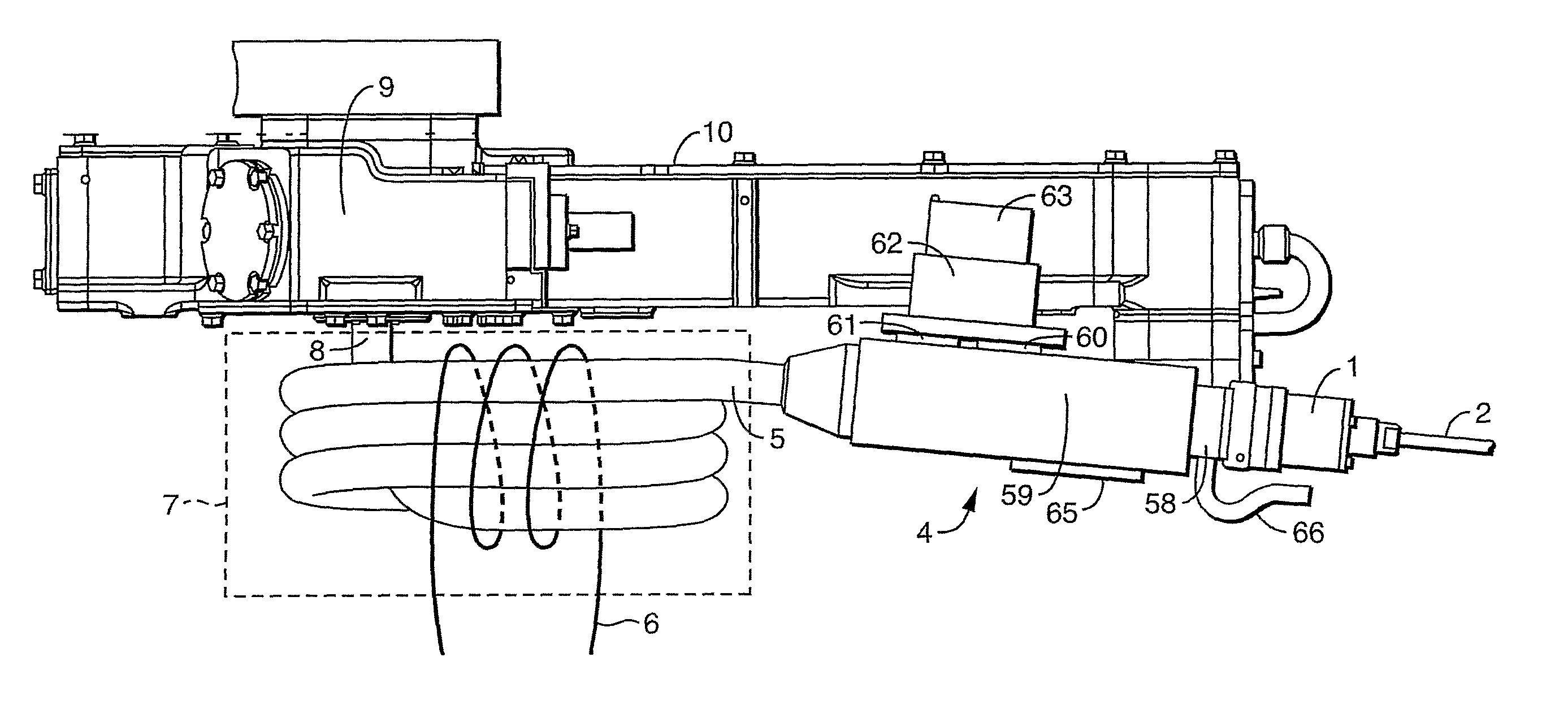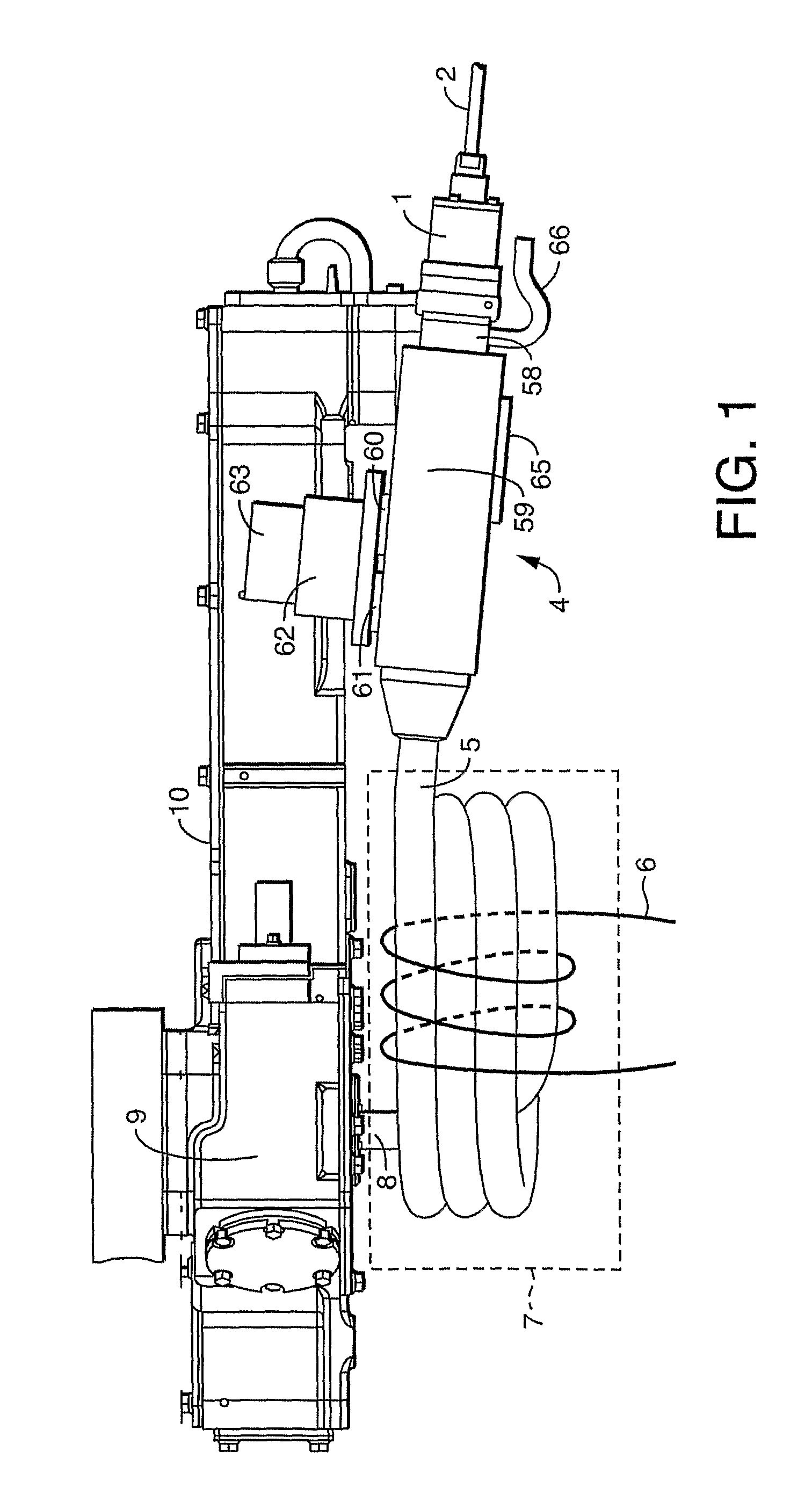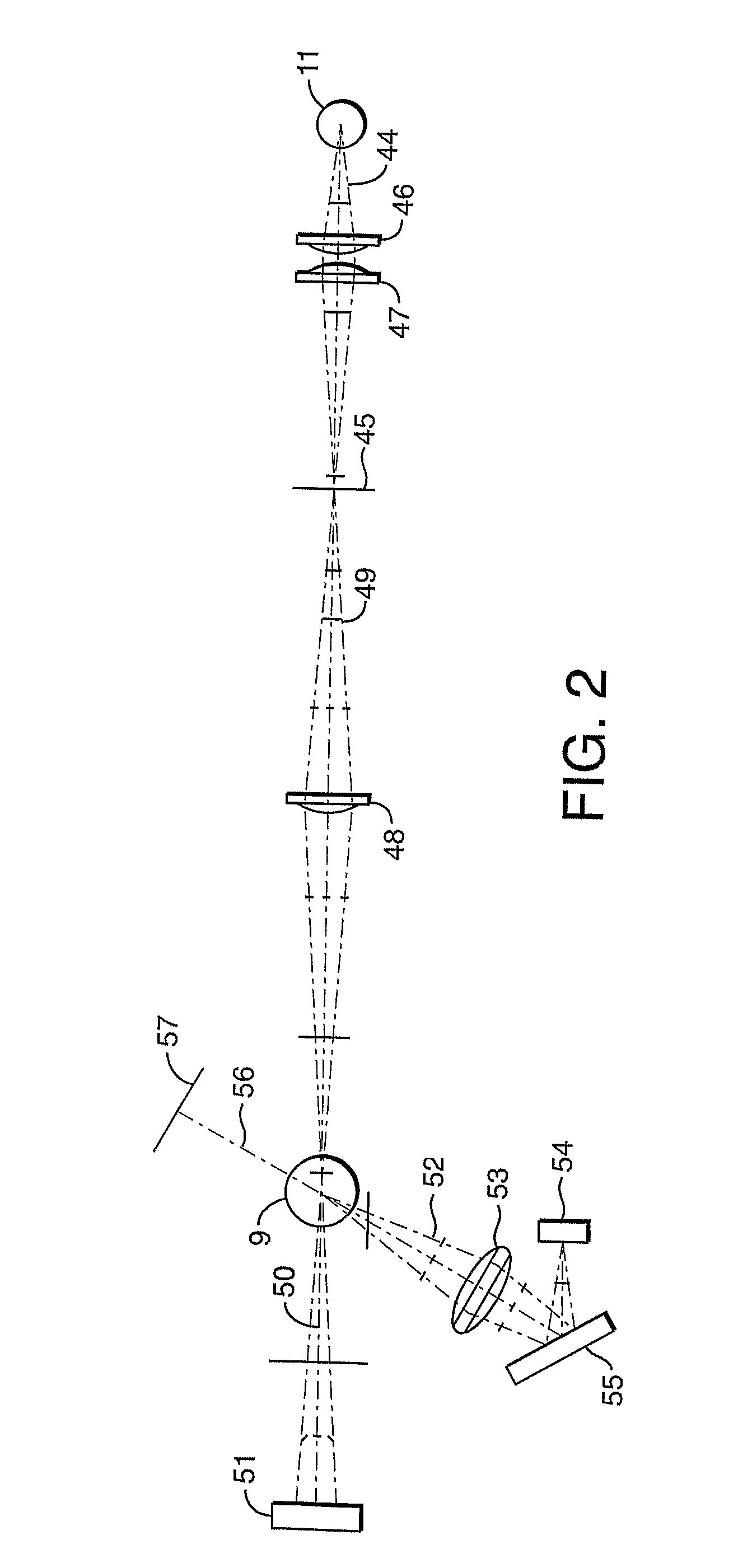Evaporative light scattering detector
a detector and light scattering technology, applied in the field of improved evaporative light scattering detectors, can solve the problems of reducing sensitivity, reducing the sensitivity of analyte particles, and reducing the risk of evaporation of relatively volatile analytes
- Summary
- Abstract
- Description
- Claims
- Application Information
AI Technical Summary
Benefits of technology
Problems solved by technology
Method used
Image
Examples
working examples
FIGS. 4, 5 and 6 compare the variation in the temperature of the nebulizer chamber with time for two prior ELSD's and an ELSD according to the invention. Referring first to FIG. 4, curves 12, 13 and 14 respectively show the temperature variation observed in the case of prior Waters 2420 detector, a prior Sedex 75 detector (Sedere Inc, 1206, River Road, Cranbury, N.J. 08512-9900, USA) and a Waters 2420 detector fitted with a nebulizer chamber as described above in place of the chamber originally supplied. In each case, the flow of eluent (1.8 ml / minute) was started at time=0 and the temperature of the nebulizer chamber was monitored for a period of three minutes. The drift tube temperature was maintained at 48° C. The composition of the eluent (approximately 90% water, 5% acetonitrile, and 5% of a 1% solution of trifluoroacetic acid in water) remained constant throughout these experiments.
In the case of the modified Waters 2420 detector (curve 14) the chamber was cooled prior to the ...
PUM
| Property | Measurement | Unit |
|---|---|---|
| temperature | aaaaa | aaaaa |
| temperature | aaaaa | aaaaa |
| temperature | aaaaa | aaaaa |
Abstract
Description
Claims
Application Information
 Login to View More
Login to View More - R&D
- Intellectual Property
- Life Sciences
- Materials
- Tech Scout
- Unparalleled Data Quality
- Higher Quality Content
- 60% Fewer Hallucinations
Browse by: Latest US Patents, China's latest patents, Technical Efficacy Thesaurus, Application Domain, Technology Topic, Popular Technical Reports.
© 2025 PatSnap. All rights reserved.Legal|Privacy policy|Modern Slavery Act Transparency Statement|Sitemap|About US| Contact US: help@patsnap.com



